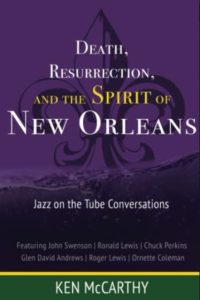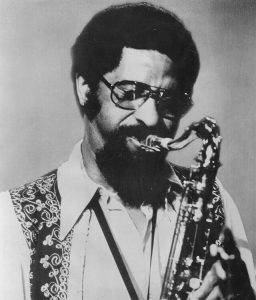“We ain’t dead yet” – Chuck Perkins in New Orleans
=
Order the book here
We Ain’t Dead Yet – Chuck Perkins
She’s the Queen City of the South but she ain’t no Southern belle
She’s a bourbon-drinking broad made hard by her battles in wars, diseases, and other floods
But at night, her street lights are the twinkle in her eyes, and from the high rise on those nights when the clouds have deserted the rainmaker you can find life in them sockets that sparkle like the big dipper
But when the levees broke our hope got soaked and so did the twinkle in her eyes and it was wondered if this might lead to our demise
Because from the high rise, you can see what is left where light is sucked back into the belly of its creator the remain in darkness wrapped his arms around the mangled body of the city hiding her gaping wound from a nervous moon who wondered what happened to the music and wanted to know how come lately the rain smelled like tears
The sad smell of fearful children and water-logged dreams made the moon blue
The rancid smell of neglect and raw sewage made the moon reflect badly on the water and the United States government
So badly the blue moonshine drinker got fooled started pulling out the water and kicking up a storm
Articles in the New York Times titled “Death of an American City” had people from Uptown to the Lower Ninth Ward pinching themselves and blowing in mirrors looking for confirmation of life while trying not to lose hope
Like Mister Joe who was a consummate optimist because he had hope all of his life, and when he was first given the news about his flooded home he woke up every morning to a cup of coffee and the hope that things were not as bad as they said
And this time he embraced hope firmly in his hands because he was a carpenter, but he turned his head long enough to wipe his eyes and blow his nose only to turn back and find that his hope had flatlined in his hands, a double Katrina whammy
Too much pressure on a 70-year-old heart, so days later he went the way of his hope and his friends wondered what hurt most, was it the destruction of his home or the death of his hope?
Talking heads serving up 24-hour news slop referred to us as refugees, just before a US congressman suggested that the Ol’ Girl be bulldozed forcing us to collectively fish our birth certificates from the toxic soup to find that space, that talk-about place of origin, to see if we really did live in a city that really was in a state that really was in the United States of America, looking for confirmation of citizenship
The replay was called a requiem in four acts so we found our reflection in the muck and whispered in its ear “Can you tell us if we’re still alive, please?”
Unable to come up with the right words our reflection didn’t answer back and we were unnerved by the silence because the eulogizers were beginning to eulogize
But then, we saw your tambourines shake, and we heard your drum beat, and we felt the hot air streaming from the satin of the brass
We knew that it was the breath of the city, that it was the confirmation we were looking for
So we shouted out to the grave digger, “Hold on to your dirt partner ‘cause we ain’t dead yet.”

– Ken McCarthy
Jazz on the Tube
P.S. Our unique programming is made possible by help from people like you. Learn how you can contribute to our efforts here: Support Jazz on the Tube
Thanks.


